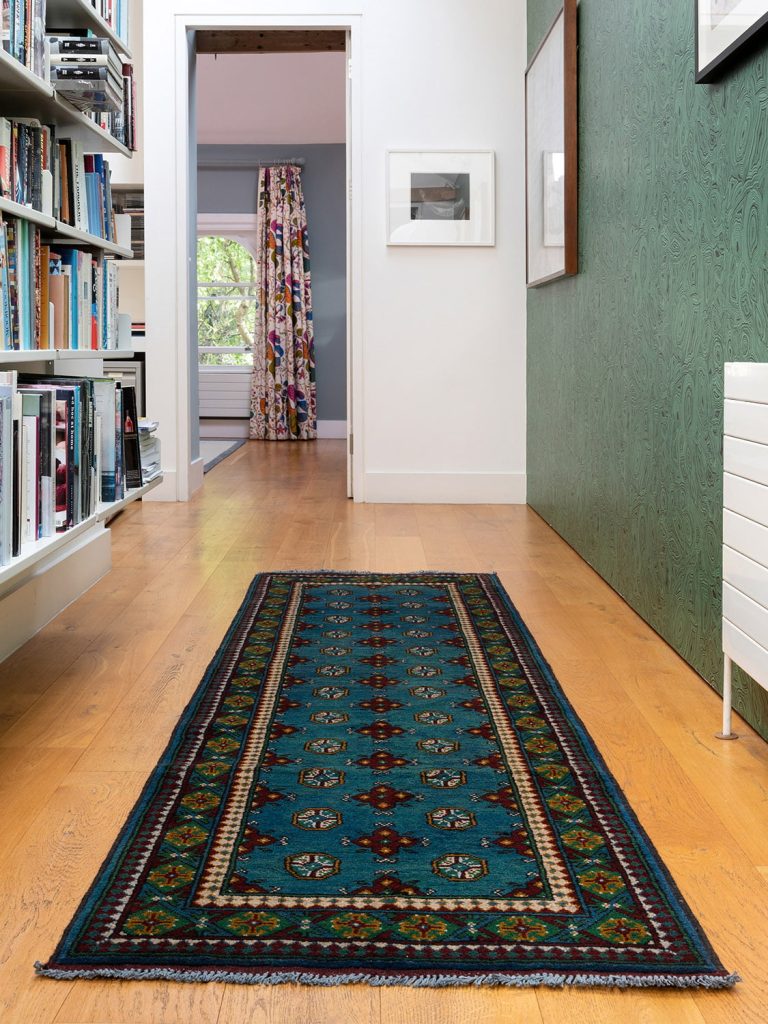Traditional
Restoration
Over time a rug can become damaged, worn or even chewed away by a pet. All of our restoration processes are completed by hand methods only.
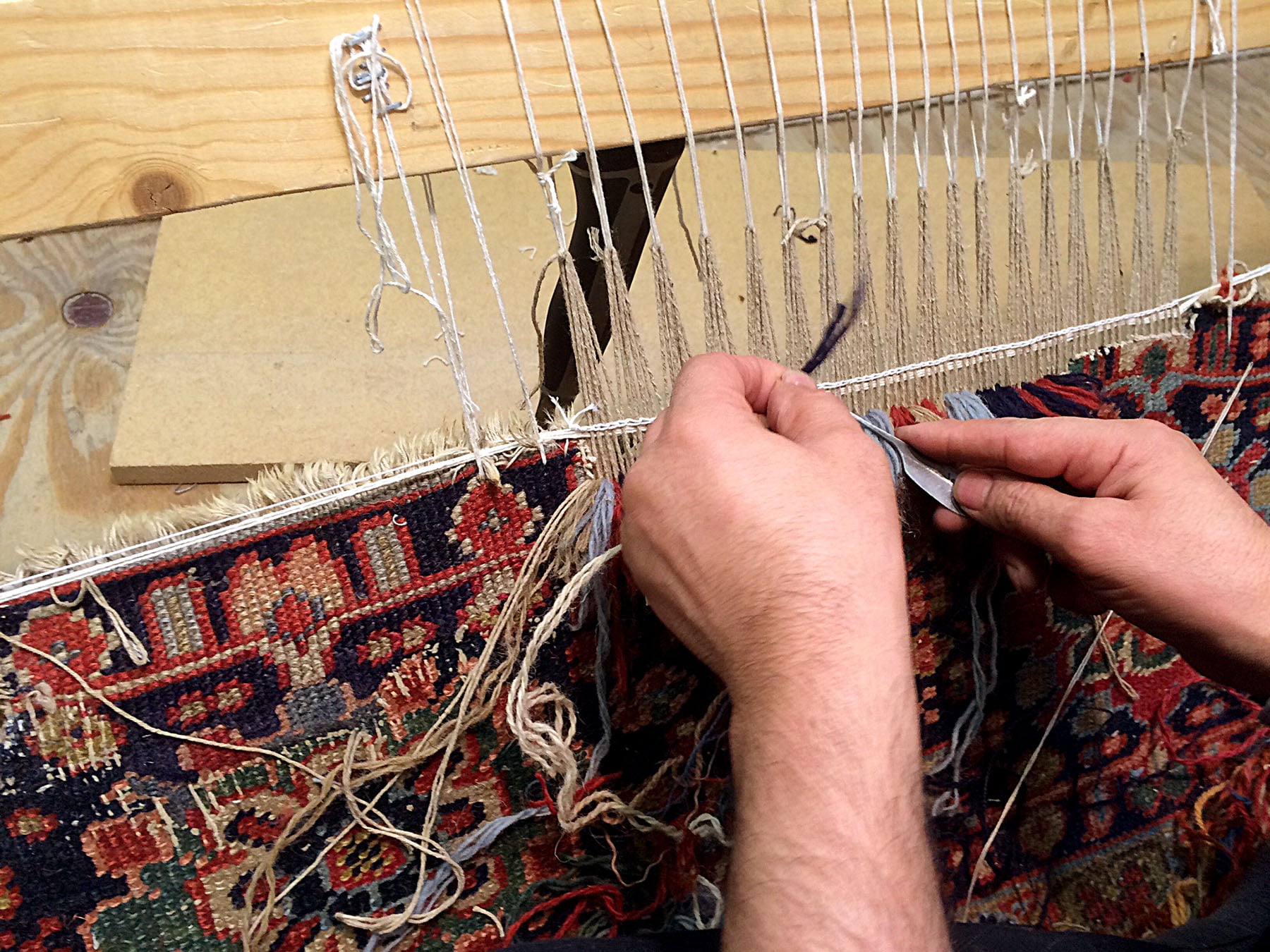
Before beginning any restoration the rug is washed
Fringe
We can restore the fringe ends of a rug using a process called 'end stopping' which stabilises the fringe to prevents loss or further loss of the hand knotted pile pattern and rejuvenates the look of the rug or we can 're-fringe’ a full or partial edge.
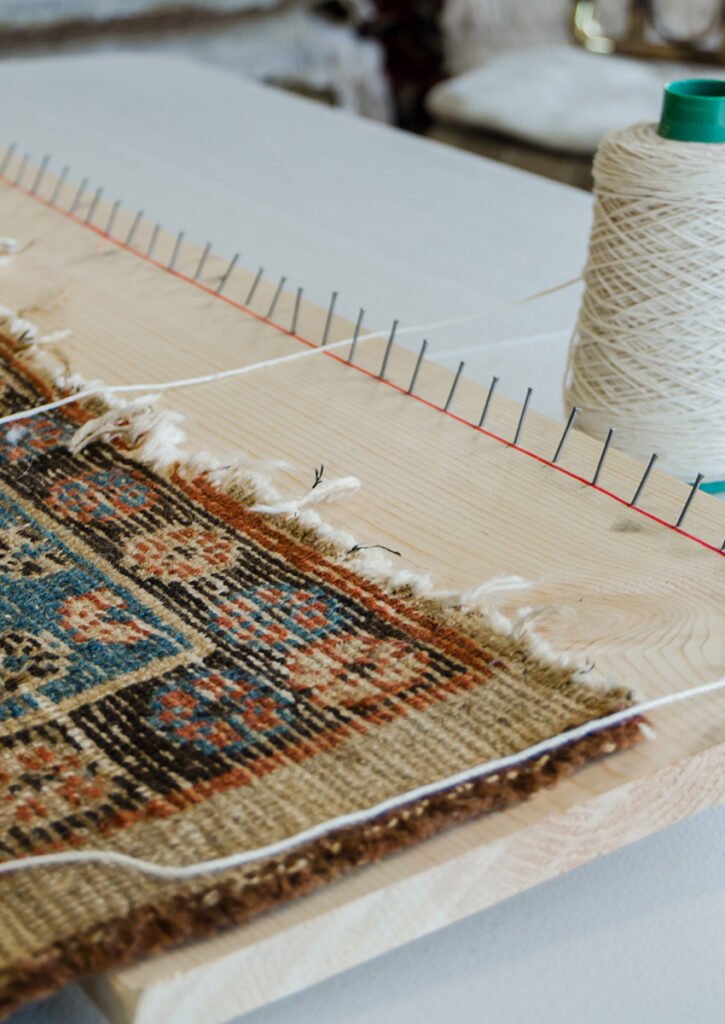
Sides
As with the fringe ends, the side binding/whipping of a rug can become worn, eventually, if not repaired, leading to erosion of the actual hand knotted pile. When we repair a damaged edge we call this process ''side binding'' applying to a partial or full side edge.
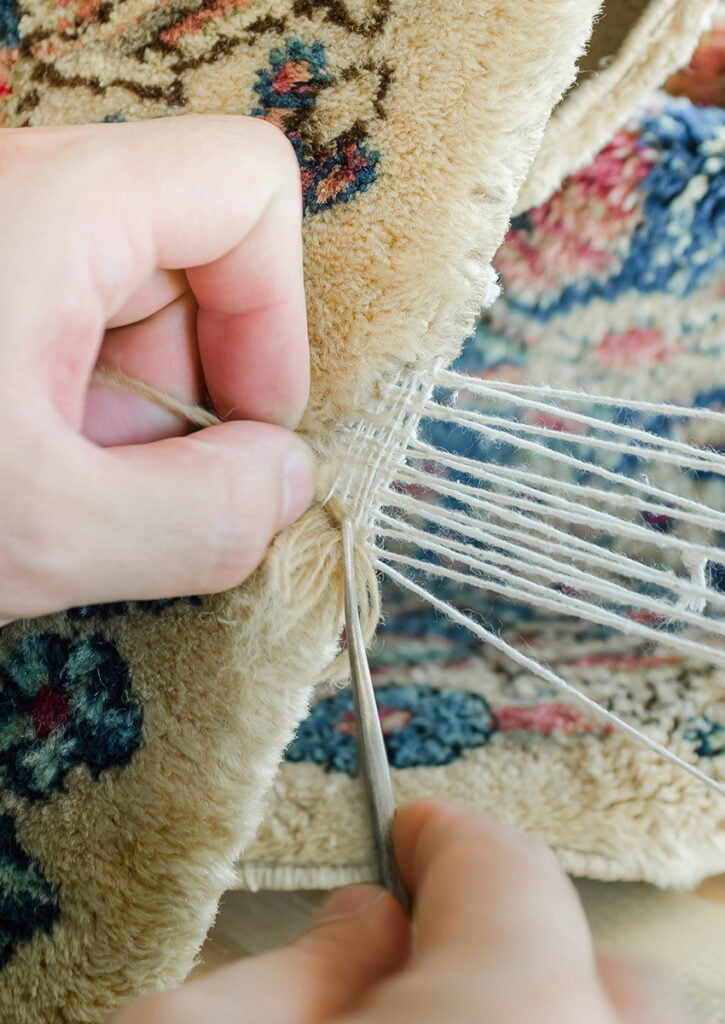
Pile
The pile can become worn away in ''high use/traffic'' areas of the rug. Eventually leading to a hole, rip or area where only the warp strands are visible. The restorer advises which options are appropriate to restore the pile depending on the worn or damaged area. All the natural yarns used in rug restoration are hand spun and vegetable and locally dyed colours imported directly to our restorer from Afghanistan. We do not use machine spun yarns made in the UK as these would be conspicuous and we prefer to keep our standards high. Our methods of restoring and repairing stand the test of time and fully blend in with the original patterns.
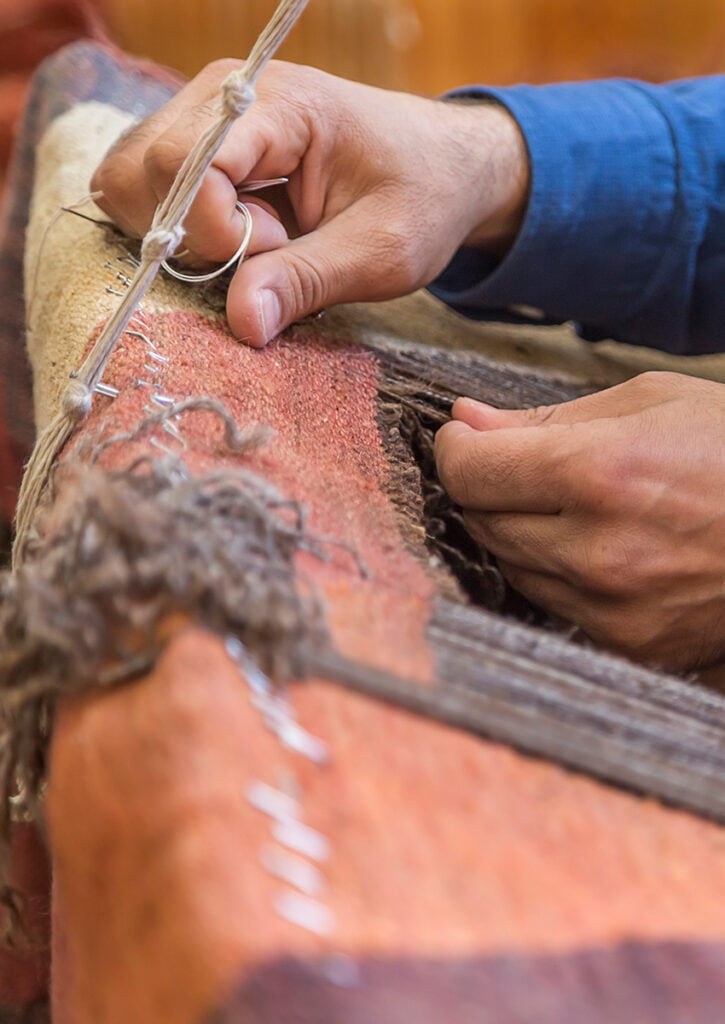
Contact us at The Rug Centre UK on +44 208 795 5594 or email at [email protected].
Find us at our warehouse and showroom at Unit 1a, Textile House, Cline Rd, Bounds Green, London, N11 2LX
Good to know….
The vegetable dyes come from wood bark, roots, leaves, fruits, berries, flowers, nuts and seeds all dried and crushed into powders. Some commonly used in Afghanistan dyes are Walnut shells, Pomegranate skins, Royal roots -Madder, Isparak flowers, Saffron flowers, Giso flowers.
Each dye colour will be an age old recipe where different quantities of the raw vegetable powders are combined together to achieve the desired shade and colour.
